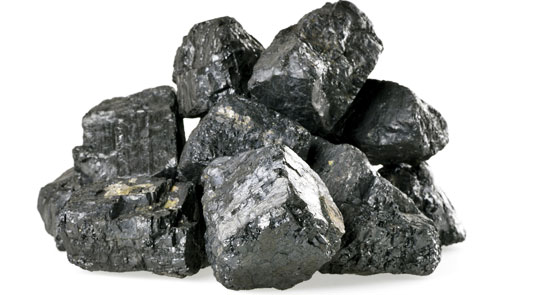
A project to fuel diesel power generators with a slurry of brown coal and water — recently described as a potential “clean energy bonanza” by federal Environment Minister Greg Hunt — is based on technology trialled unsuccessfully for three decades by controversial company White Energy, its forerunners and affiliates, which have seen hundreds of millions of dollars in public and private funds wasted.
A $10 million stage-one trial of the so-called Direct Injection Carbon Engine (or DICE) project, backed by 15 organisations including the CSIRO, aims to revolutionise brown coal use in Victoria’s Latrobe Valley and in November was tipped by the Herald Sun to be one of the first likely winners from Hunt’s proposed Emissions Reduction Fund, the key plank in the government’s Direct Action plan to tackle climate change.
The minister’s office denied this morning that the ERF could be used to fund the DICE project, saying its purpose was to fund abatement, not R&D. DICE claims to be able to halve greenhouse gas emissions compared to Victoria’s existing brown coal-fired power plants.
If the stage one trial in Japan is successful in 2015, the next stage of the DICE project will be to build a $40 million to $80 million prototype power station in the Latrobe Valley, to be in operation by 2018.
A Crikey investigation has identified at least $25 million in public funding extended to White Energy and its affiliates — alongside at least $175 million of private money, including a $35 million convertible loan from BHP — to develop Ultra Clean Coal (UCC) and Binderless Coal Briquetting (BCB) technologies since the 1980s.
The UCC technology – which involves treating coal ground down to below 0.5mm to remove non-combustible impurities or “ash” so it could be used in power generation or transport applications as a substitute for oil or gas – was promoted by Auscoal, an unincorporated joint venture between White Industries (a forerunner of White Energy), the CSIRO and the Australian Coal Industry Research Laboratory. The BCB process, pressing the micronised coal into briquettes, resulted from the trials as a way of transporting UCC.
In 1987, then-CSIRO chairman Neville Wran, former Labor premier of New South Wales, called UCC a “marvellous Christmas present from CSIRO to the Australian coal industry”. Work on UCC at a trial plant near Cessnock was suspended last year by Yancoal, which inherited the technology when it bought Felix Resources for $3.5 billion in 2009. Felix had bought UCC from White Mining in 2005.
But both UCC and BCB have consistently failed to deliver commercial returns. While White Energy is not directly involved in DICE, the process is the latest iteration of coal upgrade technologies promoted by its chairman Travers Duncan and his associates, and employs some of the same scientists including Louis Wibberley, formerly of BHP.
Duncan is one of Australia’s richest men, with an estimated fortune of $680 million, but is facing possible criminal charges of obtaining financial advantage by deception, as recommended by the NSW Independent Commission Against Corruption inquiry into the granting of a tenement in the Bylong Valley to Cascade Coal.
Jim Smitham, deputy director of the CSIRO’s Energy Transformed flagship, yesterday told Crikey the commerciality of the coal upgrading technologies was subject to the vagaries of energy markets, but CSIRO had not done further work on UCC or BCB in recent years.
However, a team of four scientists was working on the DICE project, which was predicated on an assumption, backed up by the International Energy Agency, that coal would continue to be burned for decades and if it was to be burned it made sense to do it as efficiently as possible.
Smitham did not identify CSIRO’s total financial commitment to the technology but said it was at an early stage of development and would certainly cost “millions” more.
Also involved in DICE are a number of companies, including Ignite Energy Resources and Exergen, which are believed to be seeking grants under the $90 million Victorian and federal-funded Advanced Lignite Demonstration Program which is due to announce recipients imminently.
Environment Victoria recently produced a report looking at the companies interested in the program, most of which are loss-making and dependent on grant funding. The group’s climate campaigner Nicholas Aberle opposed public funding for DICE:
“Reducing the emissions of brown coal by 50% takes it from very bad to just plain bad. What they’re proposing is to make brown coal as polluting as black coal, which is hardly a solution. Not only that, it seems that this technology won’t even be widely available for another 10 years, with only a gradual roll-out in the decade after that. All the climate science makes it clear that we can’t wait that long to cut our emissions, and we certainly can’t be cutting them by so little. The good news is we actually don’t need to wait that long. Already it is cheaper to build wind energy than coal-fired power stations. By the time DICE is ready for commercialisation, solar energy will beat it on cost and will beat it hands down on emissions.”








It is proper to pillory Environment Minister Greg Hunt for using the weasel words, “clean energy”. We need instead to hear the phrase, “non-carbon energy”, if we are serious about protecting the greenhouse. We should immediately ask, “does it emit greenhouse gases?” and hear out the reply with scepticism. It is still coal, after all.
When you or I tout wind as a replacement for coal and gas, we are proposing that wind plus gas is going to replace gas. If we honestly answer that same question, it becomes clear that we are deceiving ourselves.
Needless to say, marketing for the gas industry uses the same phrase too. But an energy source that leaks methane during extraction, leaks methane during distribution and dumps at least half the same amount of CO2 that it purports to save, is not “clean energy”.
Equally, when head of the Green Party, Christine Milne, uses the phrase “clean energy”, we should also ask the same question, “does it emit greenhouse gases?”. We could also ask, who gains when we deceive ourselves…
“clean coal” is an advertising slogan, unlike cold fusion which is at least theoretically possible, even if always 20yrs hence.
Burning requires oxygen and, at least on this carbon based planet, will always result in carbon dioxide and its even less friendly rels, monoxide and dioxin.
Wot RC above sez – change the verbiage to remove obfuscation.
We truly have a government of little talent and absolutely no vision.
Recently, a company in Connecticut was granted patents for a thorium engine that weighs 500 pounds, requires only 8 grams of thorium to run it for a century, leaves little residue and no CO2 and the thorium can basically be picked up off the desert floor here.
So, Minister Hunt, why aren’t you trying to kill two birds with one stone by utilising the engine making capacity of Holden while reducing CO2 and methane (as pointed out here, a significant component of gas extraction) and building Australia’s infrastructure using new and proven technologies? That’s right though, isn’t it, you are really here to protect the bank balances of our prime polluters so this too is just pie in the sky regardless of the fact that such technologies, like the NBN, will be those that will ultimately define successful technological societies in the future.
In the driest oldest continent, solar and wind do not get a run. Why? because they change the dynamic; and coal, gas and fuel dont own them.
Old money held the world to ransom for oil, steel and electricity until the monopoly was established.
Old new money is trying to do what the old money did, but the snake oil salesmen have to battle what the old boys didnt; a history of ongoing environmental disasters, parallel technology and superior technology. The right and the left have made their choices and the we pay regardless of whether we try to help by saving power or choosing alternative power and save the system money. The response is to put the price up to make up for less power being used.
The writer of this “article” clearly has no idea what he is talking about.
Firstly, DICE is a power generation technology and UCC is a fuel technology. Easy to confuse I guess?
Secondly, UCC is a fuel technology designed around the use of black coals, which typically have a higher ash content which needs to be reduced for use in a DICE generator. The ALDP is for technologies applicable for lignite. FYI Victorian Lignite has very low ash so UCC is not even required; therefore the article is based on an entirely false argument.
Now, on to Environment Victoria and their “reports”… They have previously released a report that accepts that gas turbine generation to be a solution for carbon reduced energy supply. Now the CSIRO has come out and endorsed DICE, said that its emissions are on par with gas turbine and would likely cost consumers less, and is the best solution to allow early penetration of renewables.
Does the writer of this piece and the guy from Environment Victoria realise how silly they look?